Hager TXA663A Handleiding
Hager
Niet gecategoriseerd
TXA663A
Bekijk gratis de handleiding van Hager TXA663A (3 pagina’s), behorend tot de categorie Niet gecategoriseerd. Deze gids werd als nuttig beoordeeld door 76 mensen en kreeg gemiddeld 4.9 sterren uit 38.5 reviews. Heb je een vraag over Hager TXA663A of wil je andere gebruikers van dit product iets vragen? Stel een vraag
Pagina 1/3

6LE000393C
TYA663AN
Dimmer 3gang
TXA663A
Dimmer 3gang
z
Safety instructions
Electrical equipment may only be installed and
assembled by a qualied electrician in accord-
ance with the relevant installation standards,
guidelines, regulations, directives, safety and
accident prevention regulations of the country.
Failure to comply with these instructions may
result in damage to the device, re or other
hazards.
Hazard due to electric shock. Disconnect be-
fore working on the device or replacing illumi-
nants. Take into account all circuit breakers
that supply dangerous voltages to the device.
Hazard due to electric shock. The device is not
suited for safe disconnection of the mains sup-
ply. Even when the device is switched off, the
load is not galvanically separated from the
mains supply.
Hazard due to electric shock on the SELV or
PELV installation. Do not connect any loads for
low voltage SELV, PELV or FELV together.
Do not connect any LED or compact uores-
cent lamps that are not expressly suitable for
dimming. The device could get damaged.
Do not connect lights with integrated dimmer.
Do not connect capacitive load and inductive
loads together on the output.
The permissible maximum load per device
must not be exceeded.
These instructions are an integral component
of the product and must be retained by the end
user.
Design and layout of the device
ε ε ε
(1)
(2)
(3) (4)
(10)
(6)
(5)
(7)
(8)
(9)
Figure 1: device overview
(1) Slide switch auto/min/max/manu
(2) Illuminated button for dimming mode
(3) KNX bus connection terminal
(4) Connection of loads
(5) Slide switch channel selection
(6) Illuminated programming button
(7) Operation button for manual operation with
status LED
(8) Control LED short-circuit and overload protec-
tion per output
(9) Control LED overheating protection
(10) Mains connection
Function
System information
This device is a product of KNX system and corre-
sponds to the KNX guidelines. Detailed specialised
knowledge obtained from KNX training courses
is required for comprehension. The planning,
installation and commissioning of the device is
carried out with the help of KNX-certied software.
Systemlink commissioning
The function of the device is software-depend-
ent. The software is to be taken from the product
database. You can nd the latest version of the
product database, technical descriptions as well as
conversion and additional support programmes on
our website.
Easylink commissioning
The function of the device is conguration-de-
pendent. The conguration can also be done using
devices developed specially for simple setting and
start-up.
This type of conguration is only possible with
devices of the easylink system. Easylink stands for
easy, visually supported start-up. Precongured
standard functions are assigned to the in/outputs
by means of a service module.
Functional description
The device has three load outputs that can be
combined variably using a slide switch to increase
loads. It works with automatic load detection
depending on the connected load in the phase
cut-on or phase cut-off and enables switching and
dimming via the KNX bus of:
- incandescent lamps and halogen lamps.
- Low-voltage halogen lamps with conventional
or electronic transformer.
- Dimmable LED and energy-saving lamps.
Additionally, the device has a learn function for
more efcient control of energy-saving lamps and
230 V LED lamps.
Correct use
- Dimming of electric consumers AC 230 V.
- Installation on DIN rail according to
DIN EN 60715 in distribution box
Product characteristics
- Status display of the outputs on the device.
- Manual activation of the outputs on the device
is possible, building site operation.
- Automatic load detection.
- Setting the minimum and maximum dimming
value.
- Timer functions.
- Scene function.
- Forced position by higher-level controller.
Short-circuit and overload protection
Short-circuit and overload are signalled via the
control LED (8). The load is throttled (see Trouble-
shooting).
Overheating protection
Overheating of the device is signalled by a perma-
nent light of the control LED (9). The connected
load is throttled (see Troubleshooting).
z
Bn?.:
M
`
6LE000393C1

Operation
Manual operation
Bus or mains power supply is present.
zPush switch (1) to position .
The manual operation is switched on, the
outputs can be controlled using the operation
buttons (7).
During manual operation, the controller is deac-
tivated via the KNX bus.
Systemlink commissioning:
depending on the programming, the manual
operation is activated permanently or for a time
period congured via the application software. If
the manual operation is disabled via the appli-
cation software, no activation takes place.
Or
zMove switch (1) to position .auto
The manual operation is switched off. Opera-
tion takes place solely via the KNX bus. The
output has the brightness predened by the bus
controller.
Operating outputs in manual operation
Operation takes place by a short or long press on
the operation button (7) (table 1).
If the integrated LED ashes when pressing the
operation button, no load is connected.
Status Performance when pressing
the button
Load is switched
off.
Status LED of
the button (7)
is off.
Short press on button:
Switch ON the connected load.
LED lights up.
Long press on button:
Dim up to maximum brightness.
Status LED of button (7) lights
up.
Load is switched
on.
Status LED of
the button (7)
lights up.
Short press on button:
Switch OFF the connected
load. Status LED of button (7)
goes out.
Long press on button:
Changes the current bright-
ness. Dimming takes place in
the opposite direction of the last
dimming operation until maxi-
mum or minimum brightness.
Table 1: manual operation
Information for electricians
Installation and electrical connection
DANGER!
Touching live parts can result in an
electric shock!
An electric shock can be lethal!
Disconnect the connecting cables
before working on the device and
cover all live parts in the area!
ç
CAUTION!
Impermissible heating if the load of
the device is too high!
The device and the connected cables
may get damaged in the connection
area!
Do not exceed the maximum current
carrying capacity!
ç
Observe temperature range. Provide sufcient
cooling.
zMount device onto DIN rail in accordance with
DIN EN 60715.
P
P
P
P
Connect device
Fig 2: installation/deinstallation with plug-in
terminals
ε ε ε
(11)
(11)
(11)
Fig 3: device connection
(11) Load
zConnect bus cable via connecting terminal (3).
z
Connect load (11) on the lower terminal strip (4)
of the device.
Start-up
Systemlink: loading physical address and
application software
The switch for manual operation (1) is in position
auto.
zSwitch on bus voltage.
zPress programming button (5).
The button lights up.
If the button does not light up, no bus voltage is
present.
zLoad the physical address into the device.
Status LED of the button goes out.
zLoad application software.
zNote down the physical address on the device.
Easylink
Information on the system conguration can be
taken from the extensive description of the service
module easylink.
Starting up the device
z
Switch on mains supply.
Functional test
The functionality of the outputs is displayed via the
status LED of the operation buttons (7).
LED status Meaning of the signal
LED lights up
permanently
Load is activated
LED ashes No load connected
Selecting the number of outputs using slide
switch
The outputs can be combined variably by adjusting
the slide switch (5) in order to control the higher
loads.
zSelect the number of outputs using the slide
switch (Table 2).
P
Number of outputs 1 2 3
Position of the slider switch (5)
Load type Maximum load on the output
Incandescent lamps, halogen lamps 230 V C1 900 W 600 W 300 W
C2 300 W 300 W
C3 300 W
Conventional transformer. C1 900 600 300 VA VA VA
C2 300 300 VA VA
C3 300 VA
Electronic transformer. C1 900 W 600 W 300 W
C2 300 W 300 W
C3 300 W
Dimmable energy-saving lamps (CFL) C1 210 W 120 W 60 W
C2 60 W 60 W
C3 60 W
Dimmable LED lamps C1 210 W
15 lamps
120 W
15 lamps
60 W
8 lamps
C2 60 W
8 lamps
60 W
8 lamps
C3 60 W
8 lamps
Table 2: Number of outputs and installed load
6LE000393C2

Setting minimum and maximum dimming value
on the device
The device is ready for operation.
zSetting brightness value.
The brightness value can be set by manual
operation on the device or by the programmed
dimming button of an operating unit.
zSet switch (1) to max. in order to apply the set
brightness as maximum dimming value.
Or
zSet switch (1) to min. in order to apply the set
brightness as minimum dimming value.
zKeep the operation button (7) pressed for more
than 3 s.
The status LED ashes twice. The set bright-
ness value is saved.
If the minimum or maximum dimming value are
outside the setting range, the status LED (7)
ashes permanently after the save operation.
Setting dimming mode on the device
In the factory setting, the device performs an
automatic load detection for ohmic, inductive and
capacitive loads and selects the suitable dimming
performance. If the load type is known, this can
be specied on the device without performing an
automatic load detection.
The device is ready for operation.
zKeep the dimming mode button (2) pressed
until its own illumination ashes.
zSelect the channel for which you wish to
change the dimmer mode by pressing on button
(7).
zBriey press the dimming mode button (2)
repeatedly until the coloured lighting of the
button (2) displays the desired operating mode
(Table 3).
zKeep the dimming mode button (2) pressed
until the lighting of the button (2) ashes quickly.
While the button is ashing quickly, the selected
operating mode is set. After that, the operating
mode is displayed for approx. 3 s before the
button goes out.
If the setting is not conrmed by holding down
the button, the device will revert to its previous
dimming mode after 2 minutes.
If the operating mode selected is not suitable
for the connected load, the dimming channel
will reset to „factory setting“ automatically.
Lighting
button (2)
Dimming mode
yellow Energy-saving lamps (CFL)
1)
purple Capacitive load
blue Inductive load
red LED load
green taught-in load (CFL + LED)
1)
white automatic load setting (factory
setting)
1) The load for the selected dimming mode is only taught
in for approx. 30 s. This can lead to temporary
impairment of the lighting.
Table 3
Displaying dimming mode
z
A single press on button (2) followed by a press
on button (7) of the channel concerned, allows
the current dimmer mode to be consulted.
The coloured lighting of the button will display
the current operating mode for approx. 3 s
(Table 3).
P
P
P
P
Teach in the load of an operating unit via the
button
When teaching in the connected load, the dimming
performance for compact uorescent lamps and
LED lamps is optimised.
The device is ready for operation. The dimming
button of an operating unit has been programmed
with the taught-in output.
z
Press the dimming button 5 times briey, then
keep the button pressed until the load switches
off.
The short press is independent of the cong-
ured operating performance on the operating
unit ( 5 x On, 5 x Off or 5 x On/Off).
z
Press button once briey.
The teach-in process starts. The teach-in
process lasts approx. 30 s. A dimming operation
is performed to optimise the dimming perfor-
mance. After teaching in, the connected load
lights up at maximum brightness and ashes
once. The teach-in process is complete.
Depending on the connected load, the minimum
brightness may change due to the teach-in
process.
Resetting taught-in loads in the device
The device can be reset to automatic load detec-
tion, e.g. after replacing illuminants.
Automatic load detection is particularly suitable
for loads that can be dimmed clearly in the
phase cut-on or phase cut-off („conventional
loads“).
The device is ready for operation. The dimming
button of an operating unit has been programmed
with the taught-in output.
z
Press the dimming button 5 times briey, then
keep the button pressed until the load switches
off.
The short press is independent of the cong-
ured operating performance on the operating
unit ( 5 x On, 5 x Off or 5 x On/Off).
If the dimming button is no longer pressed within
the next 10 seconds, the learned dimming
principle is retained.
z
Press button 2 times briey.
The load ashes 2 times. The automatic load
detection is enabled again.
Appendix
Technical data
Supply voltage 230V~ +10/-15%
via mains 240V~ +6/-6%
Mains frequency 50/60 Hz
Energy dissipation 8.9 W
Supply voltage KNX/EIB 21-32V SELV s
Current consumption KNX/EIB 2.3 mA
Consumption without load 600 mW
Upstream protection: circuit breaker 10 A
Operating altitude 2000 m. max
Pollution degree 2
Surge voltage 4 kV
Degree of protection of housing IP20
Degree of protection of housing under front panel
IP30
IK (impact protection) 04
Overvoltage class III
Dimension 6 modules, 6 x 17.5 mm
Connection capacity 0.75 mm²…2.5 mm²
Operating temperature -5 …+ 45 °C
Storage temperature - 20 …+ 70 °C
Communication media KNX TP 1
Conguration mode S-Mode, easy link
controller (TXA663A)
Conventional and electronic transformers
should not be operated with less than 75% of
their nominal load.
P
P
P
P
P
P
Troubleshooting
Manual operation not possible
Cause 1: switch (1) not moved to .
Move switch to .
Cause 2: manual operation has not been enabled
(Systemlink)
Enable manual operation via application
software.
Connected loads to not light up
Cause1: electronic short-circuit and overload
protection has triggered, control LED (8) lights up/
ashes.
Reduce connected load, check wiring and
repair if necessary.
Cause 2: overheating protection has triggered,
control LED (9) lights up.
Reduce connected load, provide sufcient cool-
ing, increase distance to adjacent devices.
Bus operation is not possible
Cause 1: bus voltage is not present.
Check bus connection terminals for correct
polarity.
Check bus voltage by briey pressing the
programming button (6), red LED lights up
if bus voltage is present. If mains voltage is
available without bus voltage, the red LED is lit
up permanently.
Cause 2: manual operation is active. Switch (1) is
in position .
Move switch (1) to position .auto
Correct Disposal of This product
(Waste Electrical & Electronic
Equipment).
(Applicable in the European Union and other European
countries with separate collection systems).
This marking shown on the product or its literature
indicates that it hould not be disposed with other
household wasted at the end of its working life. To prevent
possible harm to the environment or human health from
uncontrolled waste disposal, please separate this from
other types of wastes and recycle it responsibly to
promote the sustainable reuse of material resources.
Household users should contact either the retailer where
they purchased this product, or their local government
oce, for details of where and how they can take this item
for environmentally safe recycling.
Business users should contact their supplier and check
the terms and conditions of the purchase contract. This
product should not be mixed with other commercial
wastes of disposal.
Usable in all Europe
å
and in Switzerland
3 Hager 12.16 - 6LE000393CHager Controls S.A.S., 33 rue Saint-Nicolas, B.P. 10140, 67703 SAVERNE CEDEX, France - www.hager.com
Product specificaties
| Merk: | Hager |
| Categorie: | Niet gecategoriseerd |
| Model: | TXA663A |
Heb je hulp nodig?
Als je hulp nodig hebt met Hager TXA663A stel dan hieronder een vraag en andere gebruikers zullen je antwoorden
Handleiding Niet gecategoriseerd Hager
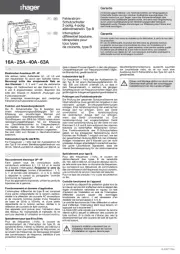
12 Mei 2025
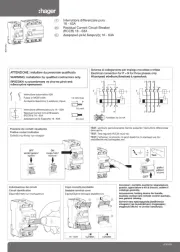
12 Mei 2025

12 Mei 2025
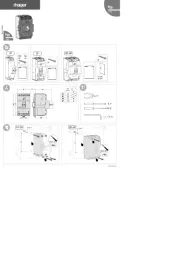
12 Mei 2025
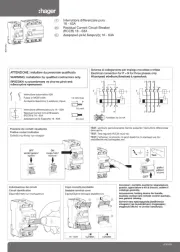
12 Mei 2025
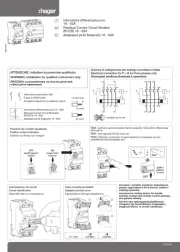
12 Mei 2025
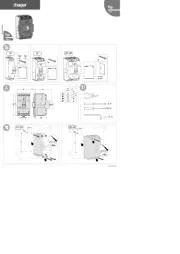
12 Mei 2025
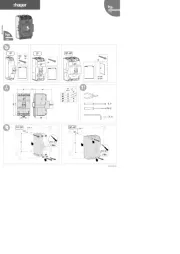
12 Mei 2025
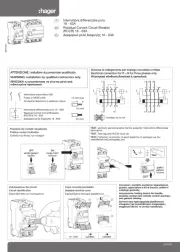
12 Mei 2025
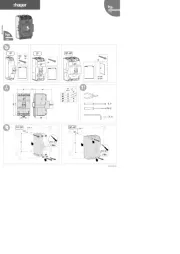
12 Mei 2025
Handleiding Niet gecategoriseerd
- Garmin
- Brighter
- Bintec-elmeg
- Aplic
- Full Boar
- Little Tikes
- Avenview
- GANA
- Volteno
- Dedra
- Neptun
- Oase
- Teenage Engineering
- Kurgo
- MK
Nieuwste handleidingen voor Niet gecategoriseerd

3 Augustus 2025
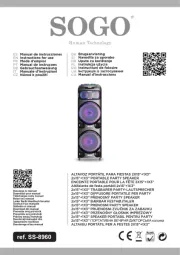
3 Augustus 2025
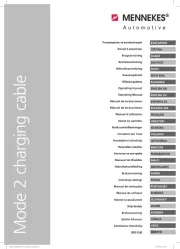
3 Augustus 2025
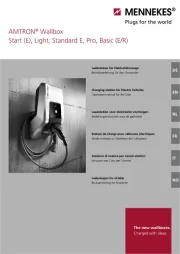
3 Augustus 2025
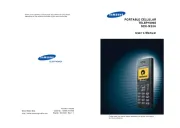
3 Augustus 2025

3 Augustus 2025

3 Augustus 2025

3 Augustus 2025

3 Augustus 2025
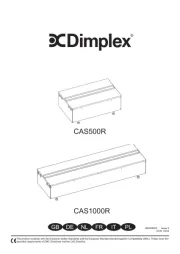
3 Augustus 2025